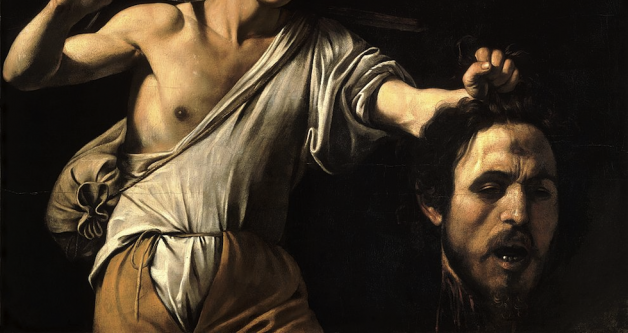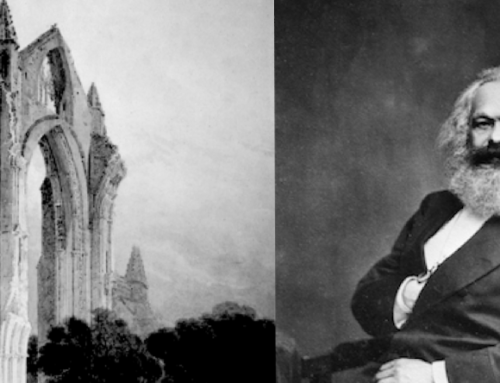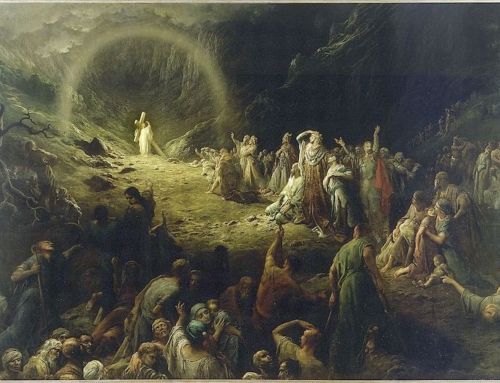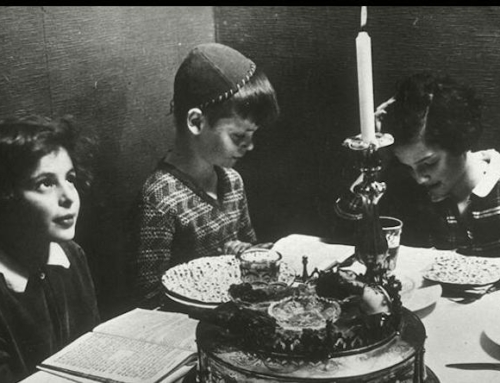No one can dispute the totality of defeat represented by a severed head. Perhaps this is why Caravaggio chose to paint David with Goliath’s scowling head hanging from his hand.
Caravaggio evokes the moment after David slew the giant with his own sword, having knocked him to the ground with nothing but a stone and a slingshot (1 Sm 17:51). David holds Goliath’s sword behind his back with his right hand, while his head dangles from the left.
Yet, the painting also shows the softness of David’s youthful flesh, and you can make out the bones of the slender David’s chest. His weakness is on display along with his triumph. David’s defeat of Goliath is one of many occasions where God shows his own strength by making unexpected heroes. We should not get the impression that David was without physical gifts. The biblical author takes every opportunity to mention how handsome he was—even in Goliath’s eyes (1 Sm 17:42)—and before killing Goliath, David had already slain a bear and a lion (1 Sm 17:36). Yet, it is his faith in God that brings David victory.
Goliath’s head shows the inner strength in David’s outward weakness. But his isn’t the only severed head found in the paintings that line the walls of the Kunsthistorishes Museum Wien. In fact, John the Baptist’s plated head with the rejoicing Herodias adorns more canvasses than Goliath’s. But severing the Baptist’s head is the sort of display of strength that betrays actual weakness. Why make a show of strength against a man who eats bugs and dresses worse than a vagrant? A queen is obviously more powerful, and should not need to prove it with such a demonstration.
Killing a poor man is a sign of fear rather than prowess. John the Baptist broke the illusion that the royal family was supremely powerful by pointing to a law higher than theirs. As with David slaying Goliath, God is the important invisible player here, but this time he is on the side of the slain rather than the slayer.
God shows his strength when he uses the still weak and youthful David to kill the mighty giant Goliath, and Herodias shows her weakness when she has the Baptist executed because she can’t murder God.
The providential ordering of everything is how God shows his power, but not through men’s muscles. God is not simply more powerful than kings or soldiers or strongmen; his is a power of a completely different kind. The headless Goliath and the beheaded John the Baptist both display God’s might. And both of these experiences pale in comparison to the most agonizing death, Christ’s perfect offering on the cross, which is also the moment at which God’s power was made most manifest. Not even the Romans at their peak could defeat God with their most gruesome torture.
✠
Image: Caravaggio, David with the Head of Goliath







